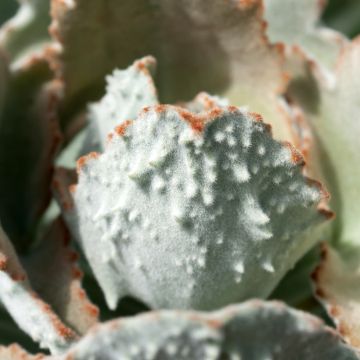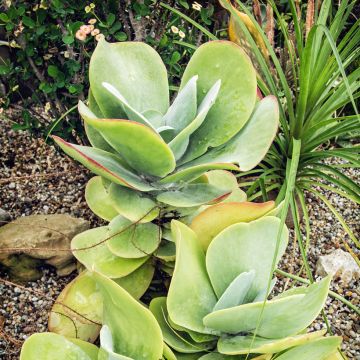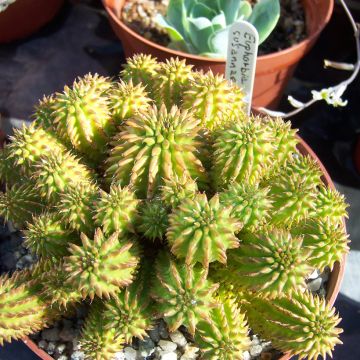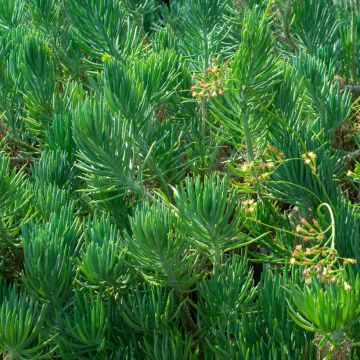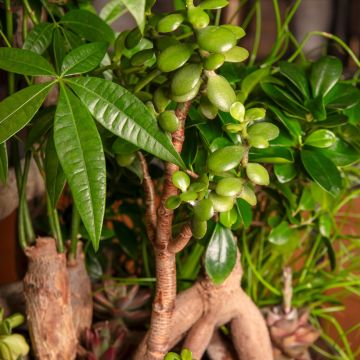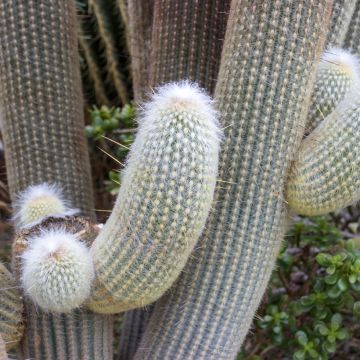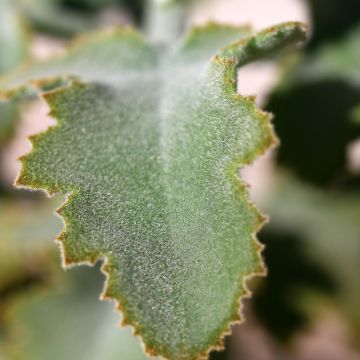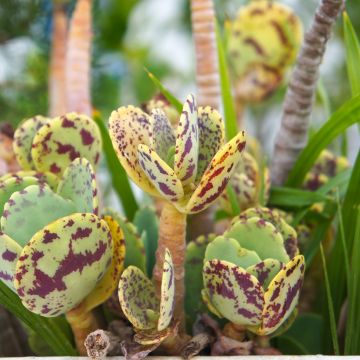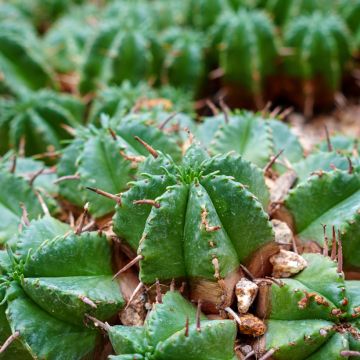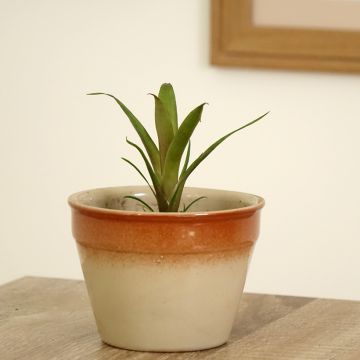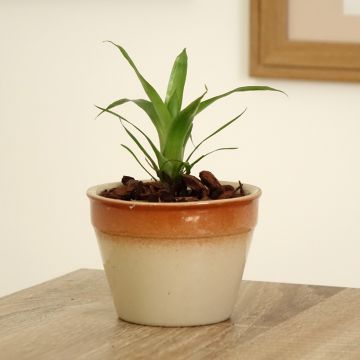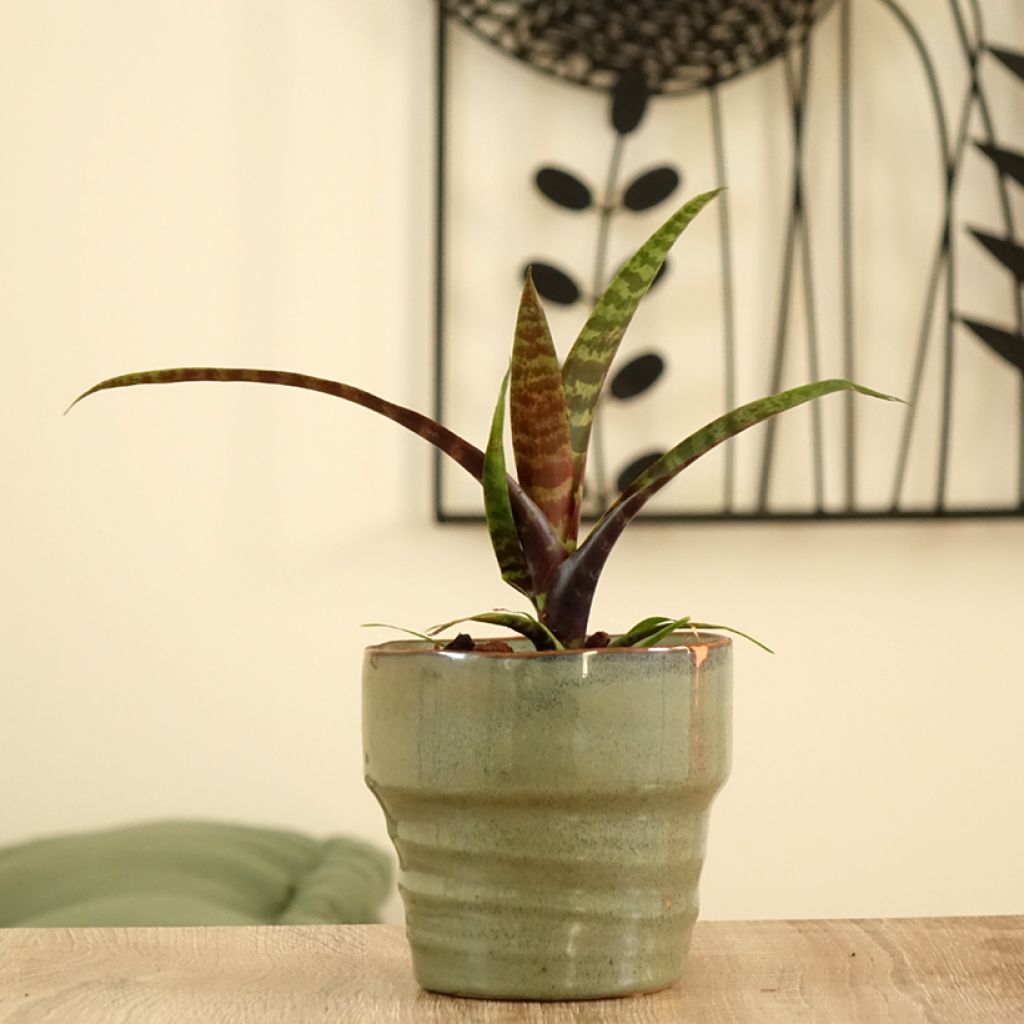

Vriesea Favorite - Flaming sword plant
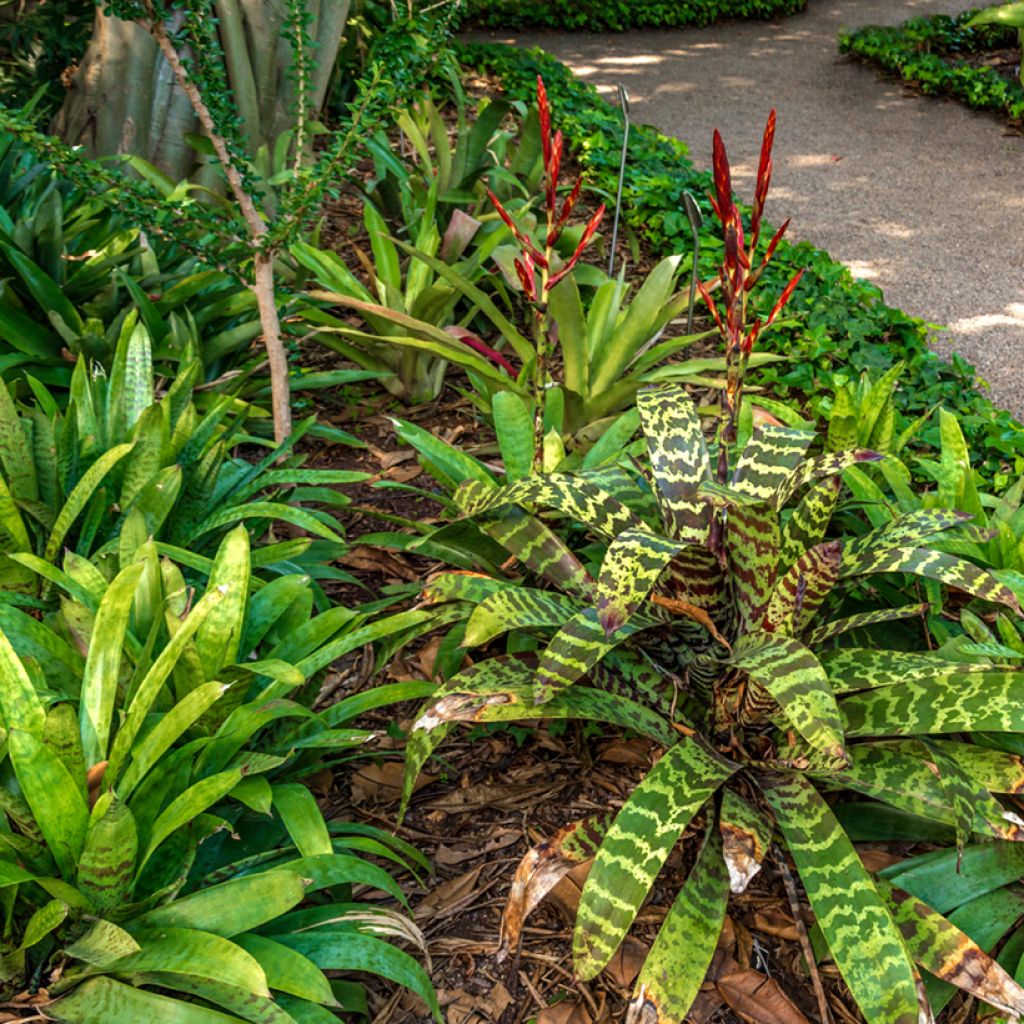

Vriesea Favorite - Flaming sword plant
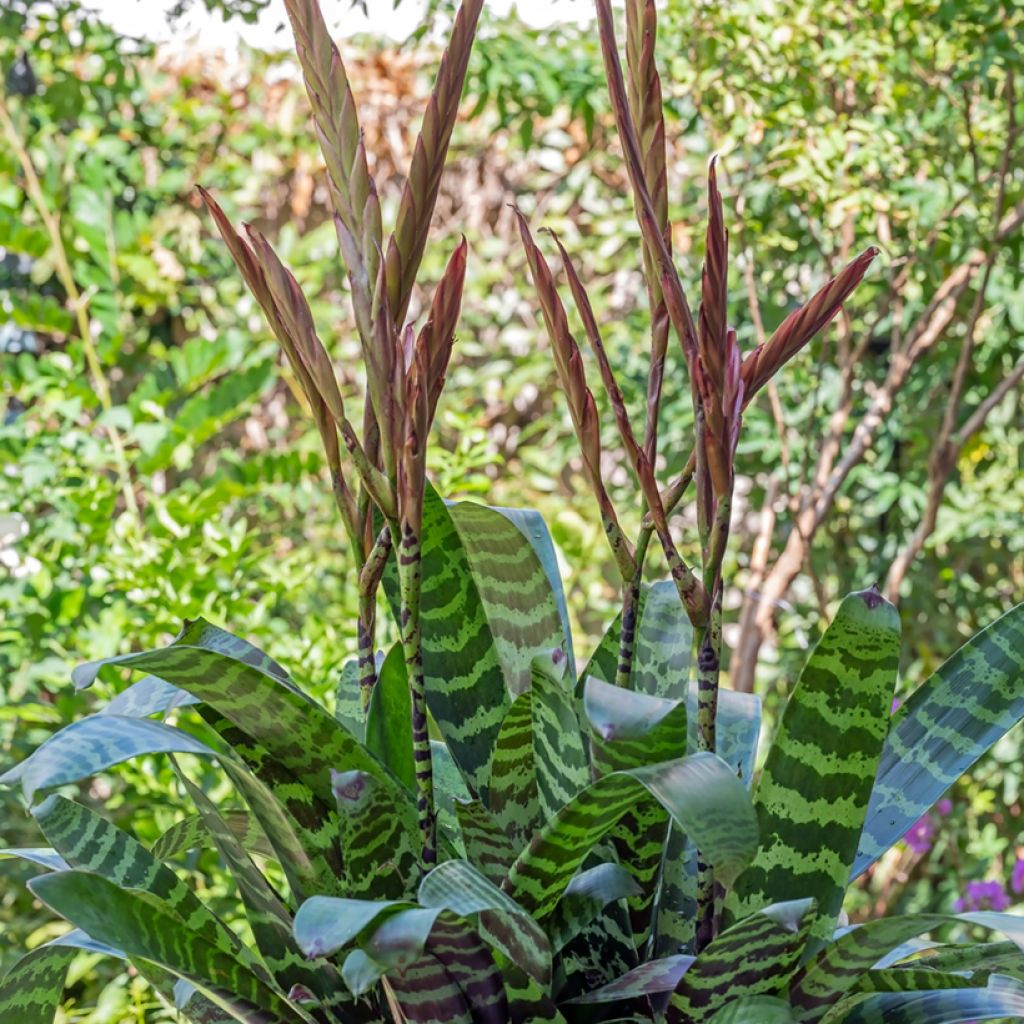

Vriesea Favorite - Flaming sword plant
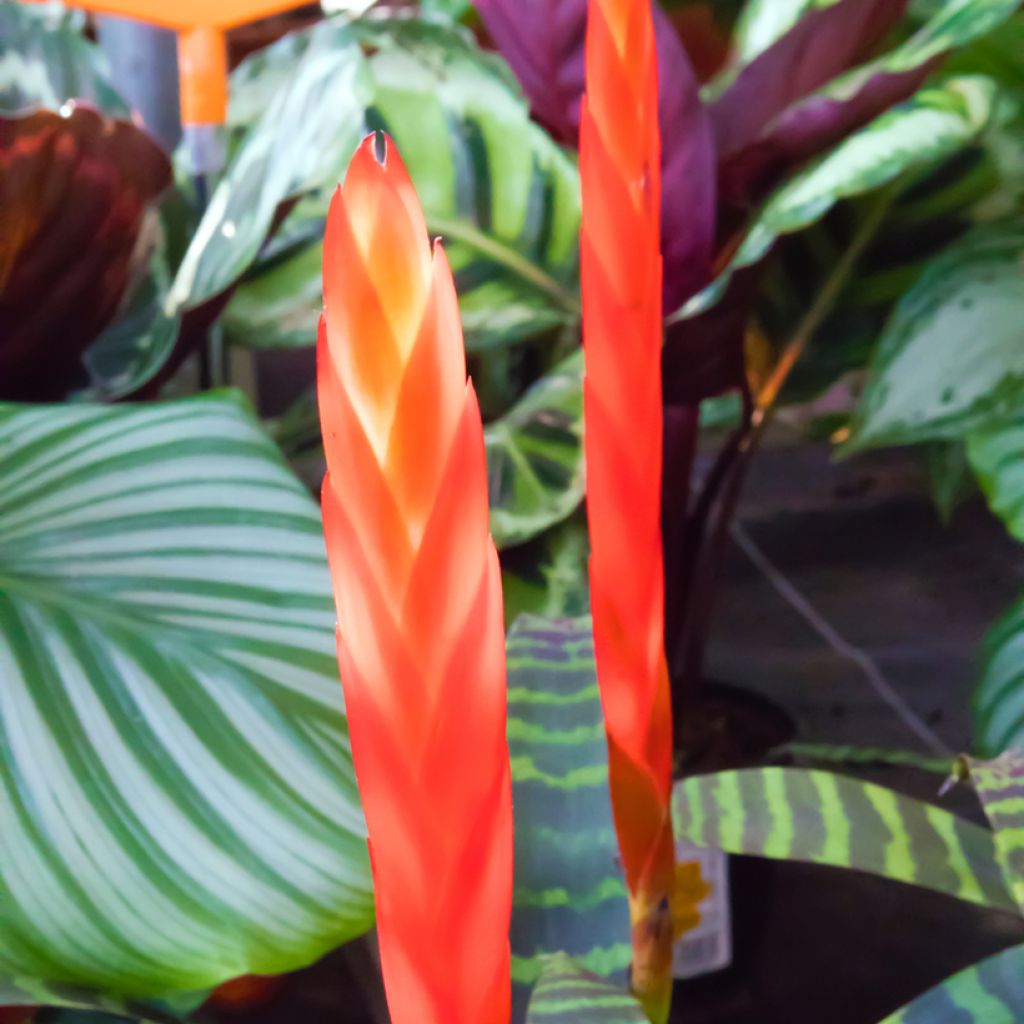

Vriesea Favorite - Flaming sword plant
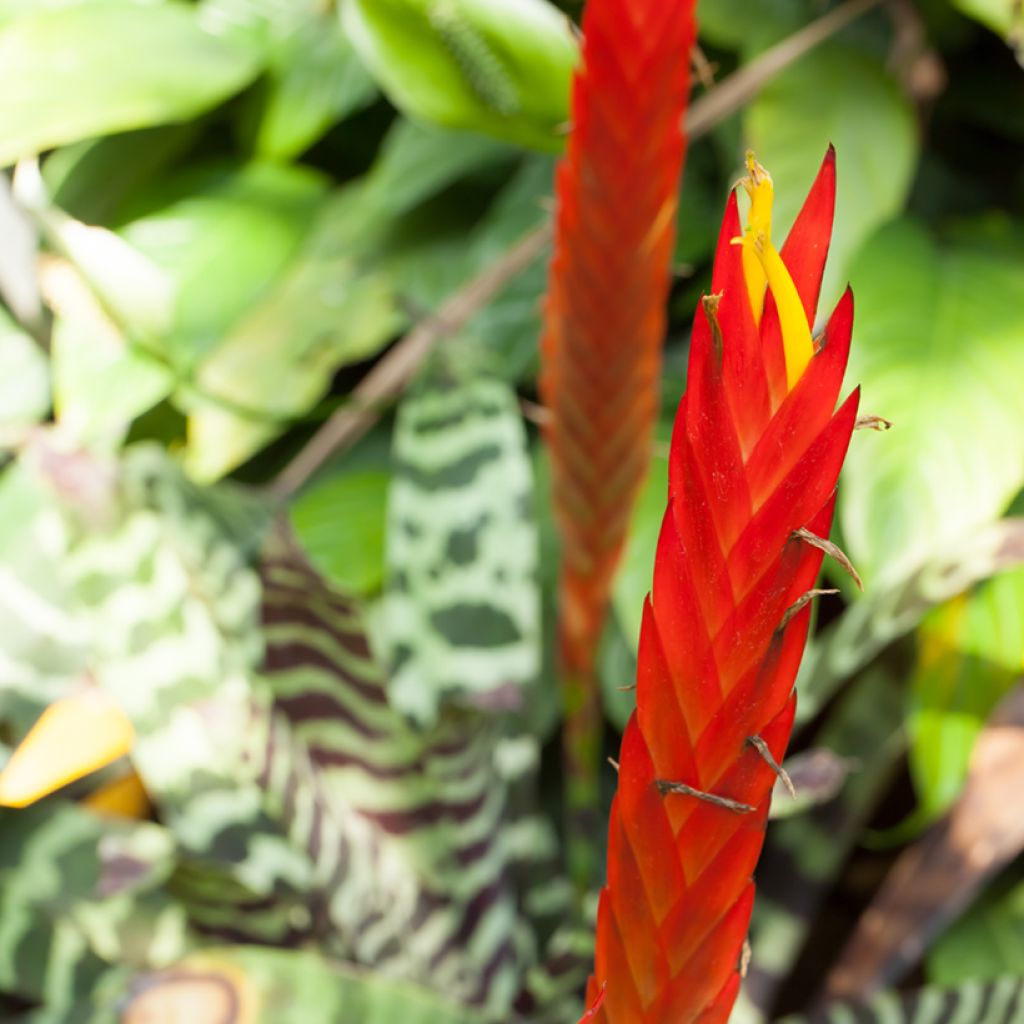

Vriesea Favorite - Flaming sword plant
Vriesea Favorite - Flaming sword plant
Vriesea x splendens 'Favoriet' FAVORITE
Flaming sword plant
Why not try an alternative variety in stock?
View all →This plant carries a 30 days recovery warranty
More information
We guarantee the quality of our plants for a full growing cycle, and will replace at our expense any plant that fails to recover under normal climatic and planting conditions.
From €7.90 for pickup delivery and €6.90 for home delivery
Express home delivery from €8.90.
Description
Vriesea 'Favoriet' (or Favorite) is a houseplant with a strikingly exotic charm. Its striped leaves form a sculptural rosette, while its proud inflorescence displays beautiful floral bracts in a vibrant orange-yellow hue. Highly decorative in a bright living room, shielded from direct sunlight, this bromeliad will be the pride of all enthusiasts of unique plants.
Vriesea 'Favorite' is a hybrid cultivar belonging to the Bromeliaceae family. It originates from the species Vriesea splendens, an emblematic plant of the genus, known for its striped foliage and spectacular inflorescences. This cultivar was developed by Exotic Plant and introduced around 1995. With a slow growth rate, Vriesea 'Favoriet' reaches a height of 30 to 50 cm and a spread of about 30 cm at maturity. It develops a compact rosette, formed of lanceolate and smooth, dark green leaves, accentuated by broad, almost white transverse bands. These leaves, which can measure between 30 and 50 cm in length, create a beautiful setting for the upright inflorescences. The flowering, which may occur in late winter or summer, is in the form of flat spikes composed of vividly coloured bracts and small, discreet tubular flowers. It remains decorative for many weeks. Indoors, Vriesea 'Favoriet' thrives in bright but filtered light, protected from direct sunlight, which could scorch its foliage. It prefers moderate to high ambient humidity, reminiscent of the tropical conditions of its native habitat. The ideal temperature ranges between 18 and 24°C.
The Vriesea genus includes over 250 species native to the tropical forests of Central and South America. Vriesea splendens, the parent species of the 'Favoriet' cultivar, is indigenous to the humid forests of the Amazon region, where it grows as an epiphytic plant. It clings to tree trunks and branches, absorbing water and nutrients from the air and rainfall, while benefiting from the shade filtered by the canopy. The genus name Vriesea pays tribute to the Dutch botanist Willem Hendrik de Vriese (1806-1862), recognised for his contributions to botany and the study of tropical plants.
Create an exotic scene by pairing Vriesea 'Favoriet' with other bromeliads such as Guzmania 'Luna' with its bright yellow tones or Aechmea fasciata 'Primera', a variety of "Silver Vase" with silvery foliage that produces a pink inflorescence. Together, these plants create a rich tropical palette.
Report an error about the product description
Vriesea Favorite - Flaming sword plant in pictures




Foliage
Plant habit
Flowering
Botanical data
Vriesea
x splendens
'Favoriet' FAVORITE
Bromeliaceae
Flaming sword plant
Cultivar or hybrid
Other Vriesea - Flaming sword plant
View all →Location
Location
Maintenance and care
Potting advice, substrates and fertilisers
Houseplant care
Disease and pest advice
Maintenance and care
This item has not been reviewed yet - be the first to leave a review about it.
Haven't found what you were looking for?
Hardiness is the lowest winter temperature a plant can endure without suffering serious damage or even dying. However, hardiness is affected by location (a sheltered area, such as a patio), protection (winter cover) and soil type (hardiness is improved by well-drained soil).

Photo Sharing Terms & Conditions
In order to encourage gardeners to interact and share their experiences, Promesse de fleurs offers various media enabling content to be uploaded onto its Site - in particular via the ‘Photo sharing’ module.
The User agrees to refrain from:
- Posting any content that is illegal, prejudicial, insulting, racist, inciteful to hatred, revisionist, contrary to public decency, that infringes on privacy or on the privacy rights of third parties, in particular the publicity rights of persons and goods, intellectual property rights, or the right to privacy.
- Submitting content on behalf of a third party;
- Impersonate the identity of a third party and/or publish any personal information about a third party;
In general, the User undertakes to refrain from any unethical behaviour.
All Content (in particular text, comments, files, images, photos, videos, creative works, etc.), which may be subject to property or intellectual property rights, image or other private rights, shall remain the property of the User, subject to the limited rights granted by the terms of the licence granted by Promesse de fleurs as stated below. Users are at liberty to publish or not to publish such Content on the Site, notably via the ‘Photo Sharing’ facility, and accept that this Content shall be made public and freely accessible, notably on the Internet.
Users further acknowledge, undertake to have ,and guarantee that they hold all necessary rights and permissions to publish such material on the Site, in particular with regard to the legislation in force pertaining to any privacy, property, intellectual property, image, or contractual rights, or rights of any other nature. By publishing such Content on the Site, Users acknowledge accepting full liability as publishers of the Content within the meaning of the law, and grant Promesse de fleurs, free of charge, an inclusive, worldwide licence for the said Content for the entire duration of its publication, including all reproduction, representation, up/downloading, displaying, performing, transmission, and storage rights.
Users also grant permission for their name to be linked to the Content and accept that this link may not always be made available.
By engaging in posting material, Users consent to their Content becoming automatically accessible on the Internet, in particular on other sites and/or blogs and/or web pages of the Promesse de fleurs site, including in particular social pages and the Promesse de fleurs catalogue.
Users may secure the removal of entrusted content free of charge by issuing a simple request via our contact form.
The flowering period indicated on our website applies to countries and regions located in USDA zone 8 (France, the United Kingdom, Ireland, the Netherlands, etc.)
It will vary according to where you live:
- In zones 9 to 10 (Italy, Spain, Greece, etc.), flowering will occur about 2 to 4 weeks earlier.
- In zones 6 to 7 (Germany, Poland, Slovenia, and lower mountainous regions), flowering will be delayed by 2 to 3 weeks.
- In zone 5 (Central Europe, Scandinavia), blooming will be delayed by 3 to 5 weeks.
In temperate climates, pruning of spring-flowering shrubs (forsythia, spireas, etc.) should be done just after flowering.
Pruning of summer-flowering shrubs (Indian Lilac, Perovskia, etc.) can be done in winter or spring.
In cold regions as well as with frost-sensitive plants, avoid pruning too early when severe frosts may still occur.
The planting period indicated on our website applies to countries and regions located in USDA zone 8 (France, United Kingdom, Ireland, Netherlands).
It will vary according to where you live:
- In Mediterranean zones (Marseille, Madrid, Milan, etc.), autumn and winter are the best planting periods.
- In continental zones (Strasbourg, Munich, Vienna, etc.), delay planting by 2 to 3 weeks in spring and bring it forward by 2 to 4 weeks in autumn.
- In mountainous regions (the Alps, Pyrenees, Carpathians, etc.), it is best to plant in late spring (May-June) or late summer (August-September).
The harvesting period indicated on our website applies to countries and regions in USDA zone 8 (France, England, Ireland, the Netherlands).
In colder areas (Scandinavia, Poland, Austria...) fruit and vegetable harvests are likely to be delayed by 3-4 weeks.
In warmer areas (Italy, Spain, Greece, etc.), harvesting will probably take place earlier, depending on weather conditions.
The sowing periods indicated on our website apply to countries and regions within USDA Zone 8 (France, UK, Ireland, Netherlands).
In colder areas (Scandinavia, Poland, Austria...), delay any outdoor sowing by 3-4 weeks, or sow under glass.
In warmer climes (Italy, Spain, Greece, etc.), bring outdoor sowing forward by a few weeks.

































